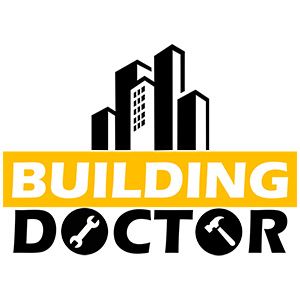Top 5 Envelope Failures and Water Leaking SolutionsPosted by Building Repair Maintenance on January 27th, 2021 5 Reasons Why Exteriors Fail "All areas of the building are susceptible to various types of failures, but most of the failures we commonly see are include in the building envelope in particular," explains Dustin Smoot, Department Manager of the Forensic Sciences Division for Pie Consulting & Engineering. "To prevent a catastrophic event, knowing the causes of the failure can help you monitor the building." You can not discover water leakage if you do not keep an eye on trouble spots and early signs until significant harm is done. To worsen a problem, deficiencies like the ones below will build on each other. 1) Thermal expansion and movement: "A major problem we repeatedly see is the lack of thermal expansion and contraction accommodation," says Warren French, President of French Engineering, roofing, waterproofing, and curtainwall specialty engineering company. "Whether they're stone, cladding, or masonry, nature can do a decent job of opening joints and cracking materials. Movement leads to cracking, which leads to water intrusion that overwhelms the flashing systems.” In areas such as the Midwest, where large temperature fluctuations can wreak havoc on poorly flashed buildings, this issue is especially pronounced, says Bill Derrick, President, and CEO of Derrick Building Solutions. Derrick explains, "Our temperatures can vary from -30 to 100 degrees F.," "It can be worn around walls and wall openings on joints. Many of the failures we find are around openings in the walls, such as windows and doors, that weren’t properly flashed when installed.” 2) Inappropriate specification: Depending on the building they are attached to, areas such as docks have special needs, explains Walt Swietlik, Director of Customer Relations and Sales Support for Rite-Hite, a loading dock equipment manufacturer. That's why you must make the designer aware of how space is going to be used. “The most common problem is specifying the wrong size of dock door, which can lead to all kinds of contamination issues,” Swietlik explains. “The same thing happens with types of dock enclosures – the client will specify the wrong type for the way they intend to load and unload trailers. Far too often, we see clients who need access to the back of a trailer. They want to be able to open the building door and see nothing but the trailer’s walls, floor, and ceiling, which would normally require a dock shelter for the trailer to back through. Yet they’ll specify a dock seal – an enclosure that seals tightly and creates a gasket between the outside of the building and the trailer – even though it will significantly limit access to the back of the trailer. Forklift drivers hit the product and it fails prematurely.” 3) Areas of drainage: Leaks can occur anywhere in water drains. In particular, this is true along the top of the house, which shoulders the largest proportion of storm damage. "If there are gutters and downspouts in a building, those are probably the No. 1 reasons why we have leaks and failures," Smith says.“That’s due to a combination of being under-designed, the amount of rain drainage, or most commonly, a lack of maintenance and routine inspections. Gutters and downspouts get clogged and are prone to wind damage.” Buildings with a collection-and-weep system need floor-to-floor flashings that accumulate and remove water (internal drainage that enables water to enter and leave masonry and stone). However, the flashings can not appropriately be combined with other components, and the weeping must remain unimpeded, French adds. 4) Defects in construction and poor repairs: joint seals and transitions are particularly prone to delayed maintenance and poorly performed repairs. One case tackled by Smith involved an expansion joint on a century-old building for a gutter. Smith identified where the joint should be, but the joint was missing when he went to find it. "Somewhere along the line, when they did not have the money to repair it, a maintenance person decided to take it out," Smith says. "Water flowed in various directions in doing so, and all of a sudden gutters that were not meant to handle that much water got more than they should." 5) Incompatible materials: Lookout, Smith notes, for compatibility problems with repair materials. Going to a home improvement store may backfire when you need caulk because big-box stores usually do not carry the high-performance caulk used in commercial construction and your purchase might be incompatible with the current building. People aren't worried about incompatible metals either," Smith adds." If you bring galvanized steel over a copper roof to extend a downspout, the less noble metal would be consumed by the copper. Using compatible products if you're doing repairs, and if they're not consistent, separate them. Like it? Share it!More by this author |


